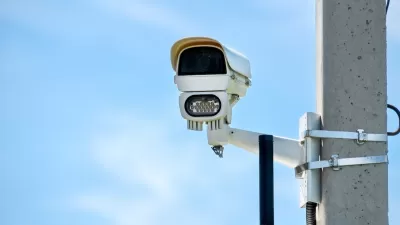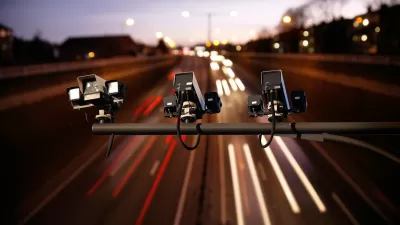While most Americans agree that speeding is a threat to public safety, dysfunctional laws and inadequate enforcement perpetuate a culture of tacitly sanctioned high-speed driving.

"In the first six months of 2021, projected traffic fatalities in the U.S. rose by 18 percent, the largest increase since the U.S. Department of Transportation started counting and double the rate of the previous year’s surge." As Henry Grabar writes in a piece detailing the history of the speed limit in the U.S., this can be attributed in part to more speeding induced by empty roads during the pandemic. Yet Americans continue to speed nonchalantly: half of drivers surveyed said they've gone more than 15 miles over the speed limit in the past month.
The nation’s most disobeyed law is dysfunctional from top to bottom. The speed limit is alternately too low on interstate highways, giving police discretion to make stops at will, and too high on local roads, creating carnage on neighborhood streets. Enforcement is both inadequate and punitive.
While the data on whether speed causes more crashes shows conflicting results, it is clear that crashes that do occur at higher speeds cause more severe injuries.
One solution, according to Grabar, is automated speed cameras. New York City, which installed a network of 750 cameras near city schools, saw a 72 percent reduction in speeding. But the concept is controversial to some civil rights advocates who say the cameras still target communities of color unfairly. Meanwhile, others argue that cameras provide a safer enforcement option than physical encounters with police, which can turn deadly.
Grabar suggests three changes that could make American roads safer: replace rural intersections with roundabouts, narrow city streets, and implement other traffic calming measures; improve driver education; and regulate speed through technology in vehicles themselves, a tactic gaining ground in Europe.
FULL STORY: The American Addiction to Speeding

Alabama: Trump Terminates Settlements for Black Communities Harmed By Raw Sewage
Trump deemed the landmark civil rights agreement “illegal DEI and environmental justice policy.”

Study: Maui’s Plan to Convert Vacation Rentals to Long-Term Housing Could Cause Nearly $1 Billion Economic Loss
The plan would reduce visitor accommodation by 25% resulting in 1,900 jobs lost.

Planetizen Federal Action Tracker
A weekly monitor of how Trump’s orders and actions are impacting planners and planning in America.

Wind Energy on the Rise Despite Federal Policy Reversal
The Trump administration is revoking federal support for renewable energy, but demand for new projects continues unabated.

Passengers Flock to Caltrain After Electrification
The new electric trains are running faster and more reliably, leading to strong ridership growth on the Bay Area rail system.

Texas Churches Rally Behind ‘Yes in God’s Back Yard’ Legislation
Religious leaders want the state to reduce zoning regulations to streamline leasing church-owned land to housing developers.
Urban Design for Planners 1: Software Tools
This six-course series explores essential urban design concepts using open source software and equips planners with the tools they need to participate fully in the urban design process.
Planning for Universal Design
Learn the tools for implementing Universal Design in planning regulations.
Caltrans
Smith Gee Studio
Institute for Housing and Urban Development Studies (IHS)
City of Grandview
Harvard GSD Executive Education
Toledo-Lucas County Plan Commissions
Salt Lake City
NYU Wagner Graduate School of Public Service





























